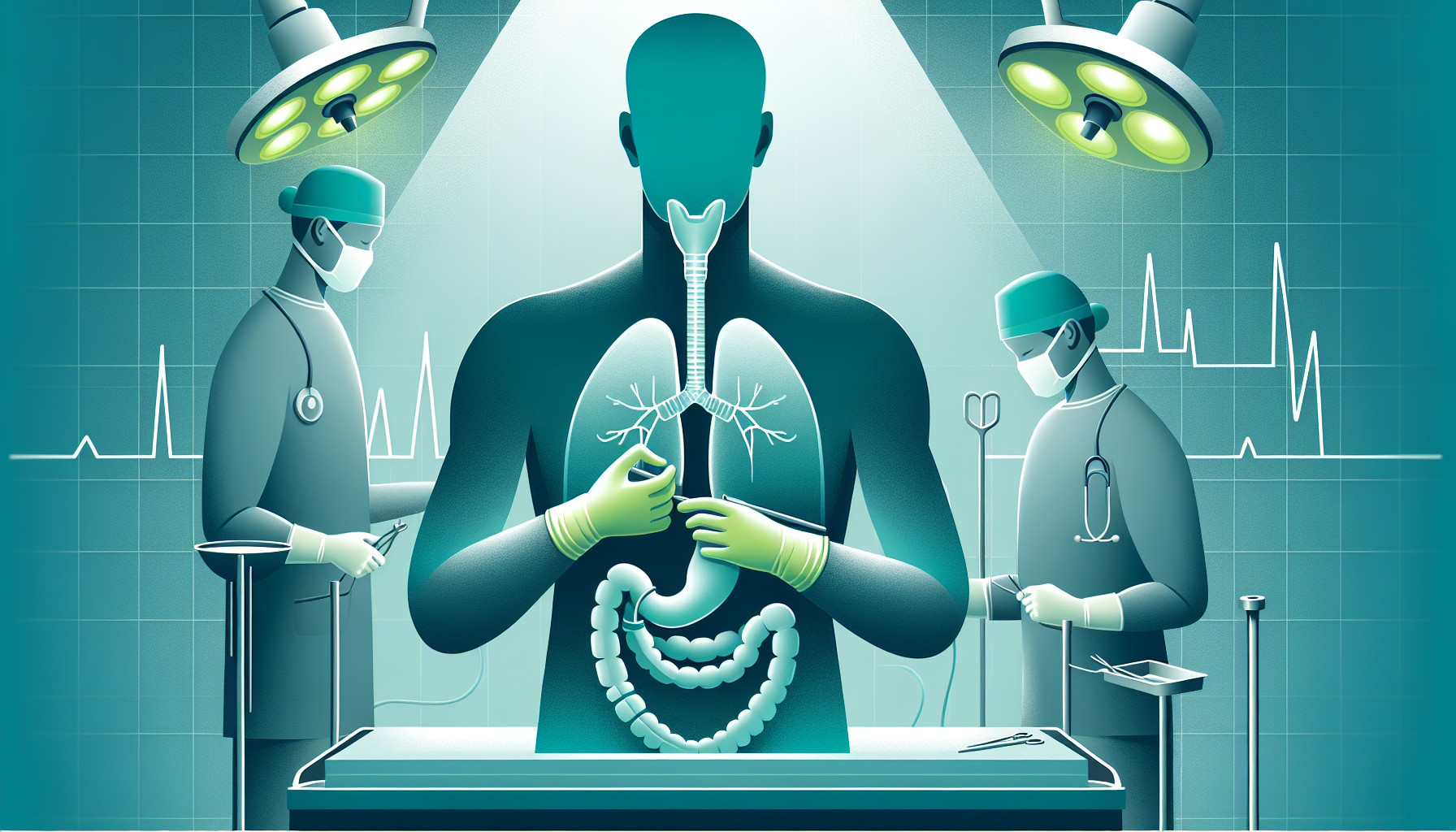Our Summary
This research paper looks at the effects of a specific surgical procedure, called thoracic duct ligation (TDL), during an operation to remove part of the esophagus (esophagectomy) due to cancer. The thoracic duct is a major part of the lymphatic system, which helps the body fight off disease. Sometimes, after an esophagectomy, fluid can build up in the space around the lungs, a condition called chylothorax. Some surgeons perform TDL to try to prevent this, but it’s not clear whether it really helps.
The researchers reviewed 15 previous studies comparing patients who had TDL during their esophagectomy with patients who didn’t. They found that the rates of chylothorax were similar in both groups. They also found that the patients who didn’t have TDL had better survival rates five years after their surgery.
In conclusion, the evidence doesn’t support routinely doing TDL during esophagectomy to prevent chylothorax. Furthermore, since not doing TDL seems to be associated with better survival rates, any future trials of TDL should be carefully monitored.
FAQs
- What is thoracic duct ligation (TDL) and why is it performed during an esophagectomy?
- Does performing a TDL during esophagectomy help prevent chylothorax based on the research?
- What impact does not performing TDL during esophagectomy have on the patient’s survival rate?
Doctor’s Tip
A doctor might advise a patient undergoing esophagectomy to discuss the potential risks and benefits of thoracic duct ligation with their surgeon, as current evidence does not support its routine use to prevent chylothorax. Additionally, they may recommend following post-operative care instructions carefully and attending regular follow-up appointments to monitor recovery and potential complications.
Suitable For
Esophagectomy is typically recommended for patients with esophageal cancer, Barrett’s esophagus, severe gastroesophageal reflux disease (GERD), or other esophageal conditions that cannot be managed with medication or other treatments. Patients who have not responded to other forms of treatment, have a high risk of cancer recurrence, or have large tumors that cannot be removed with less invasive procedures may also be candidates for esophagectomy.
In the case of the research paper discussed above, patients undergoing esophagectomy for cancer were the focus of the study. The decision to perform TDL during the surgery was based on the potential risk of developing chylothorax, a complication that can occur postoperatively. However, the findings of the study suggest that TDL may not provide significant benefits in terms of preventing chylothorax and may even have negative effects on survival rates.
Overall, the decision to recommend esophagectomy and any additional procedures, such as TDL, is made on a case-by-case basis by the patient’s healthcare team. It is important for patients to discuss the potential risks and benefits of surgery with their healthcare providers to make an informed decision about their treatment plan.
Timeline
Before esophagectomy:
- Patient is diagnosed with esophageal cancer and undergoes various tests and consultations with healthcare professionals.
- Patient receives preoperative counseling and preparation for surgery, including dietary modifications and stopping certain medications.
- Patient undergoes the esophagectomy procedure, which involves the removal of part of the esophagus and sometimes other nearby tissues.
After esophagectomy:
- Patient wakes up in the recovery room and begins the postoperative recovery process, which may involve pain management, monitoring for complications, and physical therapy.
- Patient is gradually reintroduced to a liquid diet and then solid foods as tolerated.
- Patient may experience side effects such as difficulty swallowing, reflux, and changes in appetite.
- Patient undergoes follow-up appointments with healthcare providers to monitor recovery and address any issues that may arise.
- Patient may undergo further treatments such as chemotherapy or radiation therapy to target any remaining cancer cells.
- Patient adjusts to life after surgery, including changes in diet, lifestyle, and overall health.
What to Ask Your Doctor
Some questions a patient should ask their doctor about esophagectomy and thoracic duct ligation (TDL) include:
- What is the purpose of TDL during an esophagectomy?
- What are the potential risks and benefits of TDL in preventing chylothorax?
- How common is chylothorax after esophagectomy, and what are the symptoms?
- Are there alternative strategies or techniques to prevent chylothorax without TDL?
- What is the survival rate for patients who have TDL compared to those who do not?
- How will TDL impact my recovery and post-operative care?
- Are there any specific criteria or factors that would make me a good candidate for TDL during esophagectomy?
- Are there any ongoing research studies or clinical trials investigating the effectiveness of TDL in preventing chylothorax?
- What other questions or concerns should I consider before deciding on TDL during my esophagectomy?
Reference
Authors: Liu L, Gong L, Zhang M, Wu W. Journal: Postgrad Med. 2021 Apr;133(3):265-271. doi: 10.1080/00325481.2020.1803666. Epub 2020 Aug 16. PMID: 32729759
